Recent Mold Remediation Posts
Acting Quickly After Water Damage to Prevent Mold: Essential Tips for West Valley City, UT
9/25/2024 (Permalink)
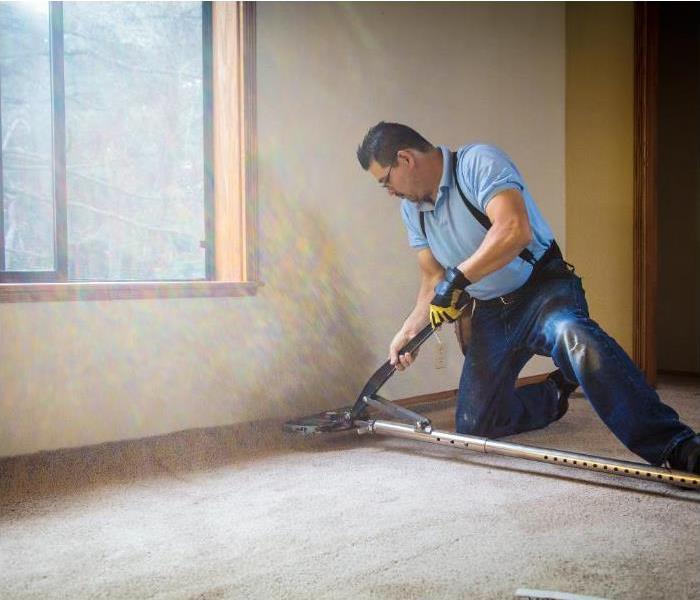 Prevent Mold in West Valley UT.
Prevent Mold in West Valley UT.
Water damage can be a homeowner's worst nightmare. Whether it's due to a burst pipe, heavy rainfall, or an overflowing appliance, the aftermath of water damage can be extensive and costly. One of the most concerning secondary issues that can arise from water damage is mold growth. Mold thrives in damp environments, making homes that have suffered water damage particularly vulnerable. In West Valley City, UT, where weather conditions can sometimes be unpredictable, it's crucial to understand how acting quickly can prevent further damage and avoid the need for extensive mold damage restoration.
Understanding the Risks of Mold After Water Damage
Mold spores are present in the air all around us, but they only begin to grow when they find a suitable environment. After water damage, your home becomes a perfect breeding ground for mold due to the increased moisture levels. Mold can start growing within 24 to 48 hours of water exposure. Once it starts, it can spread rapidly, leading to significant structural damage.
The Importance of Immediate Action
The key to preventing mold growth after water damage is to act quickly. Here's a step-by-step guide on what to do immediately after experiencing water damage:
1. Ensure Safety First
Before doing anything, ensure that it's safe to enter the affected area. Turn off the electricity to prevent the risk of electrical shock and avoid using electrical appliances or devices in the vicinity of water damage. If the water damage is extensive, consider evacuating the area until professionals can assess the situation.
2. Stop the Source of Water
Identify and stop the source of the water as soon as possible. If it's a burst pipe, turn off the main water supply to your home. For roof leaks, consider using a temporary tarp to cover the damaged area until repairs can be made. Stopping the source of water is crucial to prevent further damage and reduce the potential for mold growth.
3. Remove Standing Water
The next step is to remove any standing water. Use a wet/dry vacuum, mop, or towels to soak up as much water as possible. The quicker you can remove the water, the lower the risk of mold development. If the water is extensive, you may need to contact a professional water damage restoration service to handle the cleanup effectively.
4. Dry Out the Affected Area
Once the standing water has been removed, it's essential to dry out the affected area thoroughly. Use fans, dehumidifiers, and open windows to increase airflow and reduce moisture levels. The goal is to get everything as dry as possible within 24 to 48 hours. This step is critical because even small amounts of moisture can contribute to mold growth.
5. Inspect and Remove Damaged Materials
Inspect the area for any materials that have been damaged beyond repair. This may include drywall, insulation, and carpeting. These materials can retain moisture and become moldy if not removed promptly. Dispose of any materials that are too damaged to salvage, and ensure that any remaining items are thoroughly dried before reinstallation.
6. Clean and Disinfect
After the area is dry, clean and disinfect all surfaces that were affected by water. Use a mixture of water and detergent to scrub surfaces, followed by a disinfectant to kill any remaining bacteria and prevent mold growth. Pay special attention to areas that are prone to mold, such as corners, under cabinets, and around windows.
7. Monitor for Mold Growth
Even after taking these steps, it's important to keep an eye on the affected area for any signs of mold growth. Look for discoloration, a musty smell, or any visible mold patches. If you notice any of these signs, it’s crucial to address them immediately to prevent further spread.
When to Call a Professional
While many homeowners can handle minor water damage issues on their own, more extensive damage or persistent moisture problems may require professional assistance. Mold damage restoration experts in West Valley City, UT, can provide specialized equipment and expertise to handle severe water damage and mold infestations. They can perform a thorough inspection, use advanced drying techniques, and ensure that all mold is effectively removed and prevented.
Preventing Future Water Damage
Once you've addressed the immediate damage, it's essential to take steps to prevent future water damage. Regular maintenance of your home's plumbing system, roof, and gutters can help reduce the risk of water damage. Additionally, installing a sump pump or dehumidifier can provide added protection against water-related issues.
In West Valley City, UT, where weather patterns can sometimes lead to unexpected water damage, staying proactive about home maintenance and water damage prevention can save you from costly repairs and health issues down the line. By acting quickly and following these steps, you can mitigate the risks of mold damage and ensure that your home remains safe and dry.
Water damage can be overwhelming, but prompt action can make all the difference in preventing further issues like mold growth. By stopping the source of water, removing standing water, drying out the area, and inspecting for damage, you can significantly reduce the risk of mold and protect your home from further harm. In West Valley City, UT, where local conditions may contribute to water-related problems, being vigilant and prepared is key to maintaining a safe and healthy living environment. If you're facing severe water damage, don't hesitate to contact a professional mold damage restoration service to ensure that your home is properly restored and protected.
Tips to Prevent Mold Growth in Your West Valley City, UT Home
3/11/2024 (Permalink)
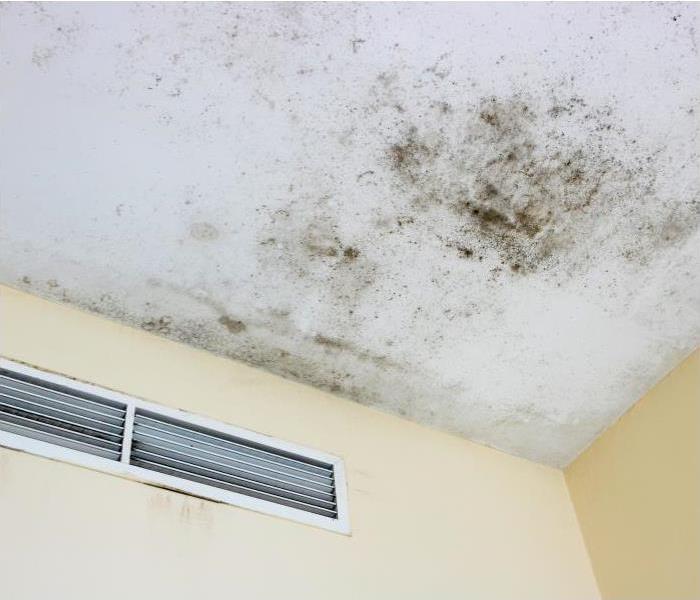 Prevent Mold Growth in West Valley City, UT.
Prevent Mold Growth in West Valley City, UT.
Nestled between the stunning Oquirrh and Stansbury mountain ranges, West Valley City, UT, offers residents a picturesque backdrop for their homes. However, the region's unique climate and occasional humidity can create an environment conducive to mold growth. Mold not only poses health risks but can also damage your home's structure and decrease its resale value. In this blog, we'll explore effective tips to prevent mold growth in your West Valley City home, ensuring a healthy living environment for you and your family.
10 Tips to Prevent Mold Growth
1. Control Indoor Humidity:
Utah's climate is characterized by dry air, but occasional spikes in humidity can occur. To prevent mold growth, it's crucial to control indoor humidity levels. Invest in a dehumidifier to maintain the relative humidity below 60%. Focus on areas prone to dampness, such as basements, bathrooms, and kitchens. Regularly empty and clean the dehumidifier to ensure optimal performance.
2. Improve Ventilation:
Proper ventilation is key to preventing mold in your home. Ensure that bathrooms and kitchens are equipped with exhaust fans that vent outside rather than into the attic. Use these fans during and after activities that generate moisture, such as cooking or showering. Additionally, consider installing an attic vent to promote air circulation and prevent the buildup of humid air.
3. Address Water Leaks Promptly:
Leaks can be a major source of moisture that fosters mold growth. Regularly inspect your home for leaks, paying attention to areas around windows, doors, and the roof. Address any leaks promptly, as even minor drips can lead to significant moisture accumulation over time. Repairing leaks not only prevents mold but also protects your home's structural integrity.
4. Clean and Dry Wet Areas Immediately:
Utah's climate can be unpredictable, and occasional rain or snowfall may occur. If water enters your home, whether through leaks or environmental factors, it's crucial to clean and dry wet areas promptly. Use towels, fans, or dehumidifiers to expedite the drying process and prevent mold from taking hold.
5. Ensure Proper Insulation:
Proper insulation plays a crucial role in preventing mold growth by minimizing condensation. Check your home's insulation, especially in areas like attics and basements. Ensure that insulation is installed correctly and in good condition. If necessary, consider upgrading insulation to prevent moisture buildup and create a mold-resistant environment.
6. Regularly Clean and Maintain Gutters:
Gutters play a vital role in directing water away from your home. Clogged gutters can lead to water overflow and potential water damage, creating conditions favorable for mold. Schedule regular gutter cleanings, especially during the fall when leaves and debris can accumulate. Ensure that downspouts are directed away from the foundation to prevent water from pooling around your home.
7. Use Mold-Resistant Products:
When renovating or upgrading your home, consider using mold-resistant materials. Mold-resistant drywall and paint can be effective in preventing mold growth in areas prone to dampness. These products have anti-microbial properties that inhibit mold development, providing an additional layer of protection for your home.
8. Keep Indoor Plants in Check:
While indoor plants can enhance the aesthetic appeal of your home, they can also contribute to mold growth. Soil in potted plants provides a breeding ground for mold spores, especially if overwatered. Be mindful of your watering practices and avoid overwatering. Place a layer of gravel or sand on top of the soil to discourage mold growth.
9. Regularly Clean and Ventilate Appliances:
Household appliances like washing machines, dryers, and refrigerators can be sources of moisture. Regularly clean and maintain these appliances to prevent mold growth. Ensure proper ventilation for appliances that generate moisture, such as clothes dryers, by venting them outside rather than into the home.
10. Schedule Professional Inspections:
Regular professional inspections can identify potential issues before they escalate. Consider scheduling an annual inspection with a qualified home inspector to assess your home's overall condition. Professionals can identify hidden leaks, ventilation issues, or areas of concern that may contribute to mold growth. Addressing these issues proactively can save you time and money in the long run.
Preventing mold growth in your West Valley City, UT home requires a combination of proactive measures and regular maintenance. By controlling indoor humidity, addressing leaks promptly, and implementing mold-resistant practices, you can create a healthy living environment for you and your family. Regular inspections and a vigilant approach to moisture management will help safeguard your home from the detrimental effects of mold, ensuring that it remains a safe and comfortable haven amidst the stunning landscapes of West Valley City.
How Much Does Mold Removal Cost?
3/21/2022 (Permalink)
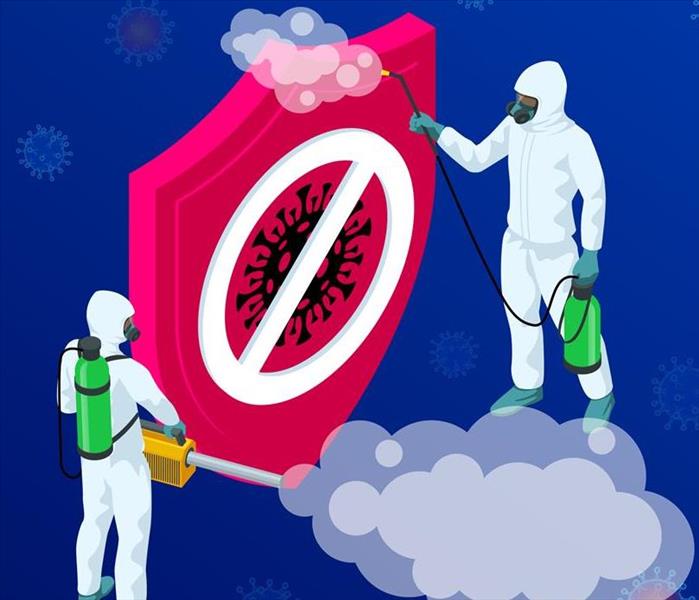 Learn more about Mold Removal and its Costs by Following These Tips.
Learn more about Mold Removal and its Costs by Following These Tips.
When there's a fungus in your home, it must be removed as quickly as possible. Otherwise, it will grow and create an even bigger, more financially draining problem. Whatever stage you're at, you're likely dreading this unexpected expense. Knowing the cost in advance should help cushion the blow. Here's how you can figure out the potential price of mold removal from your residence in West Valley City, UT.
Know That Multiple Factors Affect the Cost of Mold Removal
On average, having a professional remove mold runs anywhere between $500 and $6,000. Several factors may impact the final tally, including:
- The extent of the damage
- The types of materials that are infected
- The company you hire to get rid of the mold
- The location of your home
The classification of mold also plays a factor. Black mold removal, for instance, is typically more expensive to get rid of than less dangerous types. Safety equipment, such as respirators and protective suits, are necessary and create additional charges.
Hire a Mold Inspector
The next step toward determining the cost is bringing in an inspection professional. This is especially necessary when fungal interlopers have infected drywall or wood surfaces, the extent of which can be difficult to gauge. Qualified ones can also refer you to a mold remediation company with a stellar reputation.
Beware that not all mold inspectors are trustworthy. Before hiring one, make sure the person is accredited. Read online reviews to verify honesty.
Mold inspectors typically cost between $200 and $600. Comprehensive packages include an air test, which runs from $30 to $150. Find out whether this expense will be added on or is part of the base price.
Hire a Mold Remediator
Hiring an expert to tackle your problem is usually the best decision. Before objecting to the cost, understand the services that someone devoted to the profession provides.
Mold cleanup professionals remove items destroyed by water damage or infested with fungi. Moving these objects comes with risk. Allowing a person intimately familiar with proper handling procedures to do it for you means your family remains safe. Wall-to-wall rugs and drywall may be unsalvageable.
Mold remediation renovators have the expertise to replace these pieces of your home so that they look brand new. Once reconstruction projects are complete, they vacuum everything with a HEPA filtration system to assure no spores are still hanging around.
If the mold in your home is limited to crawlspaces, expect to pay between $500 and $4,000. When fungal invasions extend into ducts, attics, and walls, the cost generally falls between $2,000 and $6,000. Widespread structural damage is worst of all. Such scenarios can run homeowners between $10,000 and $30,000. Prevent your situation from reaching this level of seriousness by taking action as soon as possible.
Mold removal is essential for every home experiencing a fungal invasion. While the cost is unwelcome, it's a task that must happen to preserve your residence's resale value. Cushion the shock by learning ahead of time how much it will cost.
Understanding Mycotoxins and the Importance of Professional Assistance
11/10/2021 (Permalink)
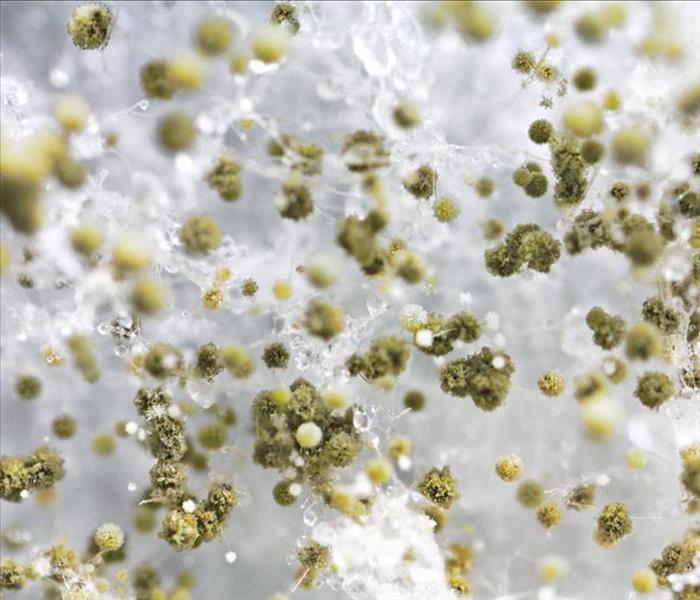 Contact a mold removal company if you detect mold in your West Valley City, UT commercial building.
Contact a mold removal company if you detect mold in your West Valley City, UT commercial building.
4 Questions to Understand the Importance of Removing Mold
Mold is known not only by its physical appearance but also by its smell. Commonly described as a musty odor, the odor is off-putting and should cause concern for business owners. The scent is a sign of mycotoxin, which indicates mold is spreading. Suppose you start to notice a strong smell in your facility. In that case, it is best to contact a mold remediation specialist in West Valley City, UT, to address the issue quickly and without the need for significant business interruption. The process for mold removal will include:
- Identification of the species
- Sealing of the affected area
- Thorough removal
- Cleaning and disinfecting
- Restoration
What Is Mycotoxin and Why Is Remediation Encouraged?
Mycotoxins are some of the primary gases produced during the spread and reproduction phase of various mold species. While not all microbial volatile organic compounds result in the production of odors, this particular gas does. The musty smell of mold, then, is a sign the mold is developing and can become problematic.
Where Does Mold Grow?
Mold requires specific conditions to grow and thrive: dampness, warmth, and humidity. Most commercial facilities will have at least one area prone to these characteristics, such as basements, kitchens, laundry facilities, etc.
To prevent mold growth, you might want to identify vulnerable areas in your facility and take preventative action. Mold prevention can be as simple as installing a dehumidifier or exhaust fan or as complex as reassessing HVAC and insulation protocols.
A good start for a commercial building is to assess the moisture and humidity levels in the facility. The humidity level in any building should never be more than 50%.
Why Is it Necessary To Hire a Professional Remediation Service?
Mold is a potential concern for inventory, building structure, and employee safety. While many business owners might seek possible DIY solutions, it is often best to hire a professional. Professionals understand government regulations regarding the disposal of potentially hazardous materials, and they have the necessary training to handle the materials. Additionally, commercial insurance policies might require professional mold removal to maintain a policy.
In some instances, the local government might also require professional removal. For example, if toxic black mold is identified in the facility, many municipalities require licensed removal specialists.
What Does Mold Removal Entail?
Depending on the severity of the problem, mold removal can be a complex process. A remediation professional will first test the facility to locate the infestation and identify the species of mold. The result of those tests will help determine the rest of the mold removal process.
If a toxic species, the specialists will seal off the affected area, ensuring the rest of the facility is protected against further spread. They will tape off vents, windows, and doorways. They will also dampen the moldy sections of walls to minimize the spread of spores before removing them. Once the mold is removed from the facility, the remediation team will clean and disinfect the space before restoring it to pre-disaster conditions.
Mycotoxin is the primary MVOC in mold, causing a musty smell. If you notice the odor in your facility, it is a sign that you need to contact a mold removal company.
How To Keep Your Employees Safe During Mold Remediation
9/7/2021 (Permalink)
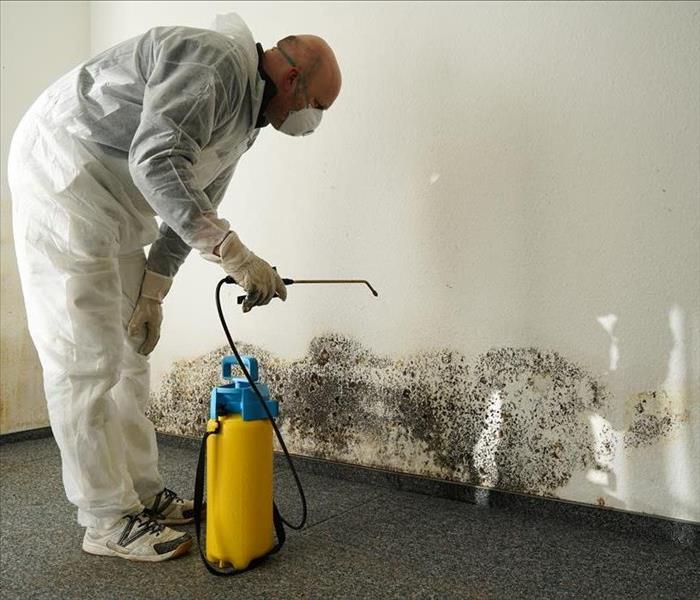 If mold appears in your West Valley City, UT business, hire a professional team to remediate the damage immediately.
If mold appears in your West Valley City, UT business, hire a professional team to remediate the damage immediately.
If you've noticed mold growth in your West Valley City, UT, commercial building, it's essential to take immediate action. The spores can spread quickly, and you can find mold running rampant throughout the building faster than you realize. If you leave it untreated, it can be harmful to humans, animals, and even the structure of your facility and building contents. It's your responsibility as the company owner or manager to keep your employees safe.
Therefore, it's helpful to know beforehand some of the safety procedures used to ensure a safe work environment for everyone, whether you're performing the mold removal job yourself or hiring a restoration company. In the meantime, keep mold growth at bay by regularly investigating for and repairing leaks and drying condensation. Control the relative humidity indoors and ensure proper drainage around the foundation. Also, maintain your building's HVAC system.
Continue Business While Ensuring Your Employees' Safety
1. Allow Employees To Work Remotely
Immediately upon discovering mold in your building, the ideal thing to do with your employees is to move them to an area that you're sure is unaffected, or ideally, out of the building entirely. If possible, allow them to work remotely from home or another location. In the case of a severe mold problem, your business insurance may pay for a temporary work location for your employees to set up base until remediation is complete. After all, a severe mold problem can take weeks or even months to remedy.
2. Place Containment Barriers
Professionals use containment barriers to keep mold and mold spores contained in the affected area where the cleanup occurs. Typically, sheets of heavy plastic are hung around the perimeter of the room and sealed on all sides to prevent mold spores from migrating to unaffected areas of the building. Air vents and door gaps in the area will also be covered and sealed.
3. Wear Personal Protective Equipment
The team of mold remediation professionals will wear personal protective equipment for two reasons: to ensure their individual safety and to prevent cross-contamination into untouched areas. If your employees must stay in the building during the restoration process, they should wear some PPE (respirators, at minimum) if they're at risk of mold exposure. Depending on the scale of the damage and the extent of the mold removal process, this PPE must include some or all of the following: hair covers, protective eyewear (e.g., goggles or safety glasses), face masks, or respirators, gloves, coveralls, and shoe covers.
4. Install HEPA Filters
High-efficiency particulate air filters are designed to remove at least 99.97% of airborne particles, including mold, pollen, dust, and bacteria. These HEPA filters can be placed on HVAC system air vents, vacuums, and portable air purifiers. It's beneficial to have these filters installed around your building, especially during mold remediation. Place some HEPA air purifiers around the office to ensure better air quality at all times.
The mold removal process can be time-consuming and intensive, but it has to be completed thoroughly and effectively to prevent further spread throughout the building. Whether the contamination is black mold or a less severe type, it's critical to begin remediation immediately.
The Secrets of Mold
6/28/2021 (Permalink)
 Some types of mold can cause health effects.
Some types of mold can cause health effects.
Mold is everywhere all of the time. It is just waiting for a good place to grow. It can be both incredibly good, like in cheese, and incredibly bad, like bread mold, depending on where it is growing and what kind it is.
Mold is useful for:
- Cheeses
- Antibiotics
- Causing materials to decompose quickly
Many molds are helpful, but some are not. When they start growing in your home and on your walls, it is time to call a mold remediation specialist in West Valley City, Utah.
What Mold Is
Mold is a fungus and is unlike plants or animals. It is very similar to mushrooms. There are a wide variety of molds, some of which can cause health effects, while others are perfectly benign.
How Mold Grows
Mold grows much like any other mushroom. It uses organic materials to feed on. When you leave bread out on the counter or in a cabinet in a few days, you will probably begin to see mold. Although it is not ideal, you will also see fridge mold on bread if left alone for long enough.
Mold grows particularly well on bread because bread is both moist and contains nutrients that it can consume. Bread also decomposes faster than many other substances.
Eating Mold
Mold grown for medicines like penicillin and cheese are very specific types. They are highly cultured and monitored, unlike the mold that grows on your loaf of bread. Although most bread mold is not usually toxic, you should avoid eating it. There are several types of mold that are dangerous and can cause health effects.
Disposing of Mold
If the mold is on something like bread which is disposable, you mustn't cut the moldy parts off. Mold contains tiny particles called spores. Spores are what spurs fungus growth and can float through the air onto other surfaces. You should put the item in a non-porous bag and throw it away.
Bread mold is only one form of mold. Each form is a bit different, and although some are useful, others are not. If you see mold, it is best to dispose of it properly.
How To Prevent Mold Growth After Water Damage
3/19/2021 (Permalink)
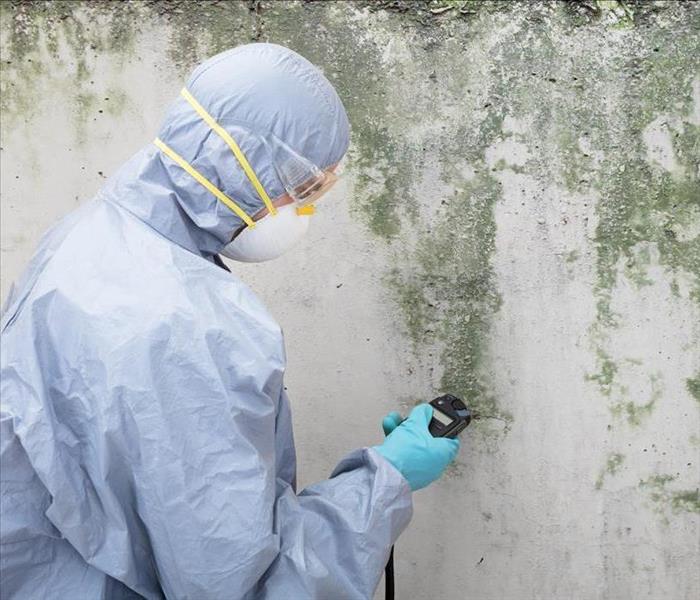 Call in professionals to assess the damage.
Call in professionals to assess the damage.
Mold prevention is one of the most important things you can do after your home is damaged by water. Whether a pipe breaks or it is from a flood, mold will start to grow quickly. Fortunately, you can do a few things to stop this from happening.
Tips to Prevent Mold Growth After Water Damage
Call In Professionals
One of the best things you can do is call a damage specialist in West Valley City, UT. They can:
- Assess the damage
- Use commercial grade mold and mildew cleaners and preventatives
- Repair the damage
Not only can professionals prevent mold growth, they often work with insurance companies to make filing your damage claim easier.
Stop Leaks Quickly
One of the keys to stopping mold is to stop what is causing the moisture. This could be a leak or generalized flooding. If the flooding is from a leak, consider shutting off the water main or stop valves. Stopping it will help prevent mold; it can give you a headstart in dealing with the damage.
Dry Wet Areas
Get the area dry as quickly as possible for the best mold prevention. Professionals do this by setting up fans and other drying equipment, but you can start by soaking up as much water as possible if the water damage is from a leak. If the problem is from a flood, you are best off letting the professionals set up pumps to get the water out.
Remove Damaged Drywall and Materials
Damaged drywall, flooring and wood can be soaked with water. There could also be moisture damage behind these that needs to be dealt with. You need to get any damp or damaged materials out before mold can take hold. This can save you thousands in remediation costs.
Whether the damage is from a leak or a natural disaster, the best way to stop it from growing is to use these mold prevention tips. With mold, it is best to act quickly before it takes hold.
How Do I Get Rid of Mildew on My Plants?
1/22/2021 (Permalink)
 Get rid of mildew on plants.
Get rid of mildew on plants.
Powdery mildew is a common problem for various plants. It can restrict a plant’s growth or even kill it, if untreated. Powdery mildew is a general term for several fungus-related plant conditions. It thrives in warm, humid climates but can live in most environments, including West Valley City, UT. This plant mildew is distinctive from others due to its powdery appearance.
Fortunately, there are safe, natural treatments for this mildew growth:
4 Ways to Get Rid of Mildew on Plants
1. Garlic
Powdery mildew doesn’t react well with sulfur. Therefore, you can use a garlic solution to kill this fungus since garlic is high in sulfur. Crush six cloves of garlic. Then, mix it with one ounce of any kind of organic oil and one ounce of rubbing alcohol. The solution then needs two days to set. Then, strain the mixture. Keep the liquid and crushed garlic and put the garlic in a cup of water to soak. Strain the water off of the garlic. Mix one gallon of water with the oil and alcohol solution. Finally, thoroughly mix in the garlic water. Now, you can spray the mixture onto your plant’s leaves.
2. Vinegar
Acetic acid, which is present in vinegar, is excellent for plant mildew and one of the oldest fungal remedies. Mix four tablespoons of vinegar into one gallon of water. You can apply this to the affected plants every three days. Be careful to not make a more robust solution, as it can harm the plant by burning the leaves.
3. Potassium Bicarbonate Solution (Baking Soda)
A bicarbonate solution is excellent at killing the fungi without harming the plant. Thoroughly mix one teaspoon of baking soda with a quart of water. Spray it over the affected plant. It can also be a preventative treatment.
4. Milk
Milk is one of the most effective powdery mildew treatments. A solution of 60 parts water with 40 parts milk should be sprayed on the affected area biweekly. You can use undiluted milk if this solution doesn’t solve the problem.
You must start treating plant mildew as soon as you discover it, especially if you find it indoors. If there's a question, mildew and mold remediation specialists can help.






 24/7 Emergency Service
24/7 Emergency Service







